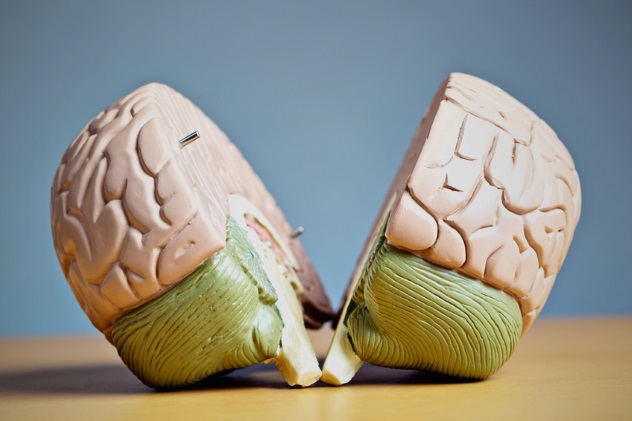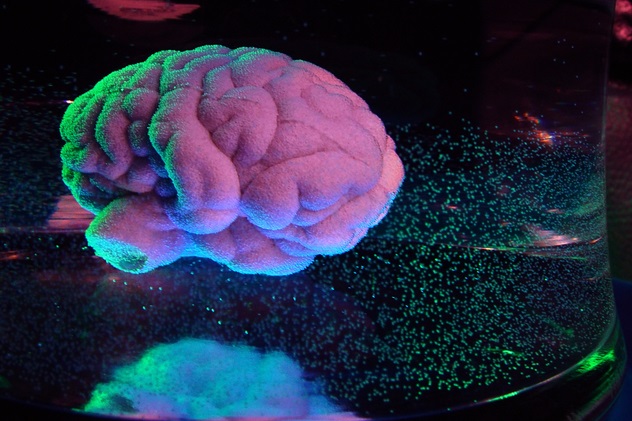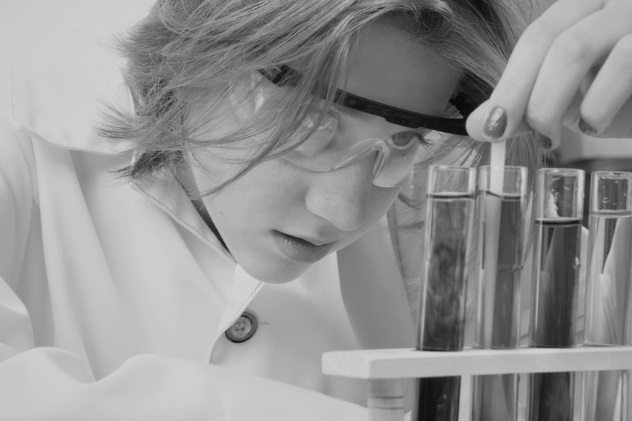 Crime
Crime  Crime
Crime  Technology
Technology 10 Hilariously Over-Engineered Solutions to Simple Problems
 Miscellaneous
Miscellaneous 10 Ironic News Stories Straight out of an Alanis Morissette Song
 Politics
Politics 10 Lesser-Known Far-Right Groups of the 21st Century
 History
History Ten Revealing Facts about Daily Domestic Life in the Old West
 Weird Stuff
Weird Stuff 10 Everyday Products Surprisingly Made by Inmates
 Movies and TV
Movies and TV 10 Actors Dragged out of Retirement for One Key Role
 Creepy
Creepy 10 Lesser-Known Shapeshifter Legends from Around the World
 Animals
Animals 10 Amazing Animal Tales from the Ancient World
 Gaming
Gaming 10 Game Characters Everyone Hated Playing
 Crime
Crime 10 Terrifying Serial Killers from Centuries Ago
 Technology
Technology 10 Hilariously Over-Engineered Solutions to Simple Problems
 Miscellaneous
Miscellaneous 10 Ironic News Stories Straight out of an Alanis Morissette Song
Who's Behind Listverse?

Jamie Frater
Head Editor
Jamie founded Listverse due to an insatiable desire to share fascinating, obscure, and bizarre facts. He has been a guest speaker on numerous national radio and television stations and is a five time published author.
More About Us Politics
Politics 10 Lesser-Known Far-Right Groups of the 21st Century
 History
History Ten Revealing Facts about Daily Domestic Life in the Old West
 Weird Stuff
Weird Stuff 10 Everyday Products Surprisingly Made by Inmates
 Movies and TV
Movies and TV 10 Actors Dragged out of Retirement for One Key Role
 Creepy
Creepy 10 Lesser-Known Shapeshifter Legends from Around the World
 Animals
Animals 10 Amazing Animal Tales from the Ancient World
 Gaming
Gaming 10 Game Characters Everyone Hated Playing
10 Weird Philosophical Thought Experiments
Ethics committees can be so tiresome, always getting in the way of cool experiments. Even if you can get clearance for an experiment, sometimes reality simply will not play along. So to make matters clearer, we have to seek purity of thought to carry them out. Here are ten of the weirder thought experiments proposed by philosophers to try to understand the world.
10 Buridan’s Ass

A donkey finds itself placed precisely between two equally tempting piles of hay. There is absolutely no difference between either of the potential dinners. What will the donkey do? The hungrier it gets, the more it desires to eat and the more important its choice becomes. If neither pile has an advantage over the other, then how can the donkey pick one? It will continue pondering the choice until it dies.
Although this thought experiment is called Buridan’s Ass, it appears nowhere in the 14th-century philosopher’s works. Similar ideas can be found all the way back to Aristotle. Perhaps this experiment should simply be performed to find out how a real donkey would behave and to answer important questions about free will. As easy as it may be to find an ass in academia, it might be a problem to find identical meals to offer it.
9 Plato’s Cave
Plato’s Allegory of the Cave is meant to teach us about Plato’s conception of reality. For Plato, the reality we touch with our senses was nothing more than a shadow of a higher reality. This idea can be hard to grasp, so he put it in the form of an allegory:
You find yourself chained in a cave, unable to move your head. All you can see is the wall in front of you. You hear other people chained beside you but cannot see them. Somewhere behind you a fire is casting light onto the wall. When people pass between the fire and the wall, you can see their shadows and hear muffled echoes. As far as you know, the shadows are all there is. Then, somehow, you find yourself free. You stand, see the fire, and see the objects casting the shadows. You also see a way out of the cave. Up in the sunshine, your eyes are dazzled, but you soon come to know the real world. If you were then dragged back into the cave, your eyes would be ill-adjusted to the dark. If you try to explain the nature of reality to the other chained men, they’d think you were crazy, mock you, and even kill you.
8 Chinese Room

Suppose you can’t speak or read Chinese. You find yourself in a room full of books written in Chinese and a set of instructions written in English telling you what to do. A slip of paper with Chinese writing is passed into the room. You consult your instructions and copy out Chinese characters according to the rules you are given and pass your response out of the room. To the person outside the room, it would seem as if you had mastered Chinese, when in fact you are only following a basic set of rules.
This thought experiment comes from John Searle and is a riposte to the Turing Test. If a computer is able to fool us into thinking we are talking with a person, then surely it is intelligent? Searle’s person in the room is acting like a computer, following a script but having no knowledge of what they’re doing.
7 Parfit’s Split Brain

Derek Parfit is a philosopher who has studied Identity theory and has cast doubt on the idea of a stable identity existing over time.
Say that we perfect brain transplants. Your brain is extracted and divided in two, and each half is put into a clone of your body. Each patient wakes up, remembers your memories, and thinks and feels as if they’re you, Now there are two people claiming to be you. Are there now two yous, or have you been destroyed by the creation of two half-yous?
6 Swamp Man

In a paper with the Apollonian-sounding title “Knowing One’s Own Mind,” David Donaldson goes further into Identity theory:
One day, Donaldson is walking in a swamp. As luck would have it, he is struck by lighting and killed. At the same moment, another lightning bolt strikes a different part of the swamp. This second strike rearranges the atoms of that part of the swamp into exactly the same arrangement as Donaldson before he was struck by lighting. This new Swamp Man brushes himself off and walks out of the swamp thinking he is David Donaldson, acting like him, and never knowing the difference.
Can we say that David Donaldson has been harmed? Is Swamp Man really David Donaldson? We may have to wait for the creation of teleportation before we can answer this one.
5 Brain In A Vat

What if, right now, you’re not reading this article on a screen with your eyes? What if you’re actually just a brain floating in a vat? You might think you’d notice such a state of affairs, but this vat is a complex machine. Sensory data is being fed into your naked brain. Everything that you see and hear and touch and smell are simply electrical signals pulsing into your grey matter. If the simulation is perfect and consistent, then how could you disprove that this is really the nature of your existence?
4 The Utility Monster
Utilitarianism is an ethical philosophy which says that we should act in such a way as to cause the greatest amount of good for the greatest number of people. A one-sentence summary like that makes it sound perfect, but thought experiments can probe the limit of Utilitarianism’s utility.
Imagine that we create a being that extracts more utility out of things than normal people. When we eat a cake, we get a certain amount of happiness from it, but our creation, the Utility Monster, gets 1,000 times more. If there is only one cake, then to extract the most use from it, we should obviously give it to the Utility Monster. If there are two cakes, then we should still give both of them to the Monster, as he will get more happiness than if we shared them out. If the Utility Monster gets more use out of all things than we do, then Utilitarianism would tend to make a majority of people unhappy, but the total level of happiness in the world would still go up.
3 Thomson’s Violinist

Another criticism of Utilitarianism comes from those who value personal rights. Right now, people are waiting for organ transplants. You are a walking bag of organs. You may be happy, but the dozens of people in need of your organs would enjoy them more. The utilitarian thing to do would be to kill yourself (making a few sad) and give your parts to the others (making many happy).
Judith Jarvis Thompson proposed the following thought experiment: One morning, you wake up attached to an unconscious violinist. The violinist is sick, and only your blood can keep them alive. A society of music lovers paid doctors to hitch your circulatory systems together in the night. The violinist will require this arrangement for nine months. Unplug the violinist, and they die. Would it be murder to separate yourself from the violinist? Even though you never consented to the surgery, do you have a responsibility to the violinist?
2 Wittgenstein’s Beetles
Imagine that everyone is given a box which only they can look in. In everyone’s box is a “beetle.” Everyone calls the thing in their box a beetle, but they can never compare what’s in their box, their beetle, with other people’s beetles. We only know what a beetle is by referring to our own box. It’s possible that everyone has something completely different in their boxes. It’s also possible that no one has anything in their box at all.
The point of the experiment is that we refer to things that others can have no access to. All children at some point ask whether the color blue that they see is that same as others are seeing. When I feel pain, how can I know whether it’s the same thing you’re experiencing when you say you are in pain?
1 Mary’s Room

Mary is a world-class scientist. She knows every fact there is to know about color. There is no physical, chemical, or neurophysiological aspect of color that she hasn’t studied and mastered. Only one thing is lacking: She has performed all of her research in a black and white room. One day, Mary is released from her room and sees color for the first time. She learns nothing new; she knew it all before, but has she gained knowledge from the experience of color?
This thought experiment comes from Frank Jackson’s paper “What Mary Didn’t Know” and deals with one of the deepest problems of philosophy: What is knowledge? It may be that even in the realm of the pure thought experiment, we cannot know what it is we can know.








